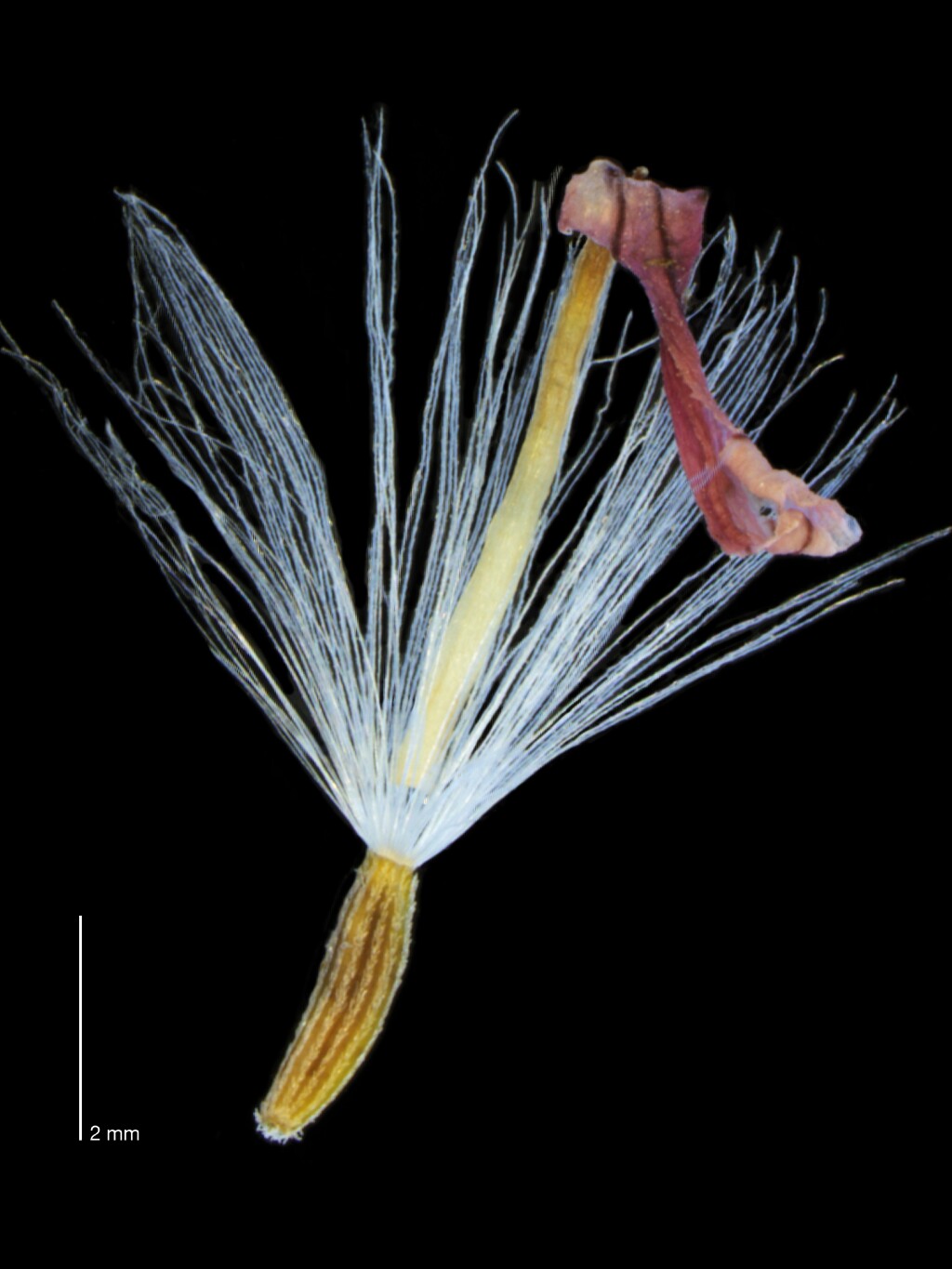Senecio elegans
L. Purple GroundselGlabrous or (on young growth) weakly pubescent, simple to much-branched erect annual, 20–100 cm high; branches thick and more or less hollow. Leaves sessile or pseudopetiolate, auriculate at base, c. ovate in outline 3–15 cm long, 1.5–5 cm wide, pinnatisect, with lobes dilated and toothed near apex; petiole c. 1–4 cm long. Inflorescence corymbose, each corymb usually with 1–6 capitula per branch and c. 3–7 cm diam., but these sometimes compounding; capitula radiate; involucre c. cup-shaped, 7–8 mm long; bracts 12–15, prominently black-tipped; bracteoles present. Ray florets 12–17(rarely doubled), rich purple (rarely white), ligules 7–10 mm long; disc florets 40 or more, yellow. Cypselas 2–2.5 mm long, pale brown, ribbed, papillose hairy in intervening grooves; pappus of slender white hairs 6–7 mm long, deciduous. Flowers Sep.–Jan.
GleP, Brid, VVP, GipP, OtP, WaP, Gold, EGL, WPro, OtR, Strz. Also naturalised WA, SA, NSW (LHI), Tas.,. Native to South Africa. Also naturalised New Zealand. Locally common on dunes and swales fringing ocean beaches, from the South Australian border to Corner Inlet.
Apparent hybrids with Senecio pinnatifolius have been reported from near Portland and on Wilsons Promontory. Such plants have more narrowly lobed or subentire leaves, and pale mauve- or whitish-rayed capitula.
Walsh, N.G. (1999). Senecio. In: Walsh, N.G.; Entwisle, T.J., Flora of Victoria Vol. 4, Cornaceae to Asteraceae, pp. 941–965. Inkata Press, Melbourne.
 Spinning
Spinning




